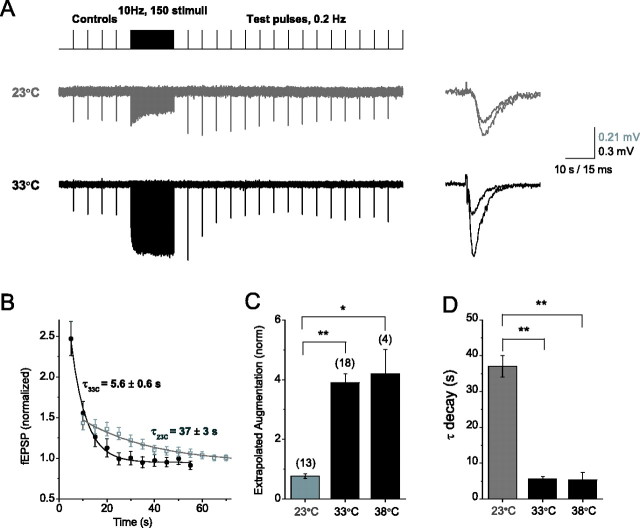Figure 5.
Augmentation increased greatly in amplitude and decayed much faster at 33–38°C. A, Augmentation was monitored with test pulses at 0.2 Hz after a 150-stimulus train at 10 Hz. This stimulation protocol was insufficient to evoke the slow component of depression (see Results); therefore, in the selected time window, reported changes in the synaptic strength were associated with pure augmentation. Representative examples of raw fEPSP responses are shown on the top for 23°C (gray) and 33°C (black) with 15 test pulses after the end of stimulation reflecting the decay of augmentation. For presentation only, the raw traces of train responses were downsampled, and the baseline drifts were subtracted as described in Materials and Methods. Examples of single control and augmented fEPSPs (first test response after each train) are shown on the right for each temperature. B, Average augmentation at 23°C (□) and 33°C (•), measured as shown in A. C, D, The amplitude of augmentation extrapolated to t = 0 (C) and the time course of decay (D) at 23, 33, and 38°C. Augmentation was approximately five times larger and decayed approximately seven times faster at 33°C than at 23°C (p < 10−5 for both). Parameters of augmentation did not change significantly with heating from 33 to 38°C (p > 0.37 for both). ∗p < 0.05; ∗∗p < 0.01.

